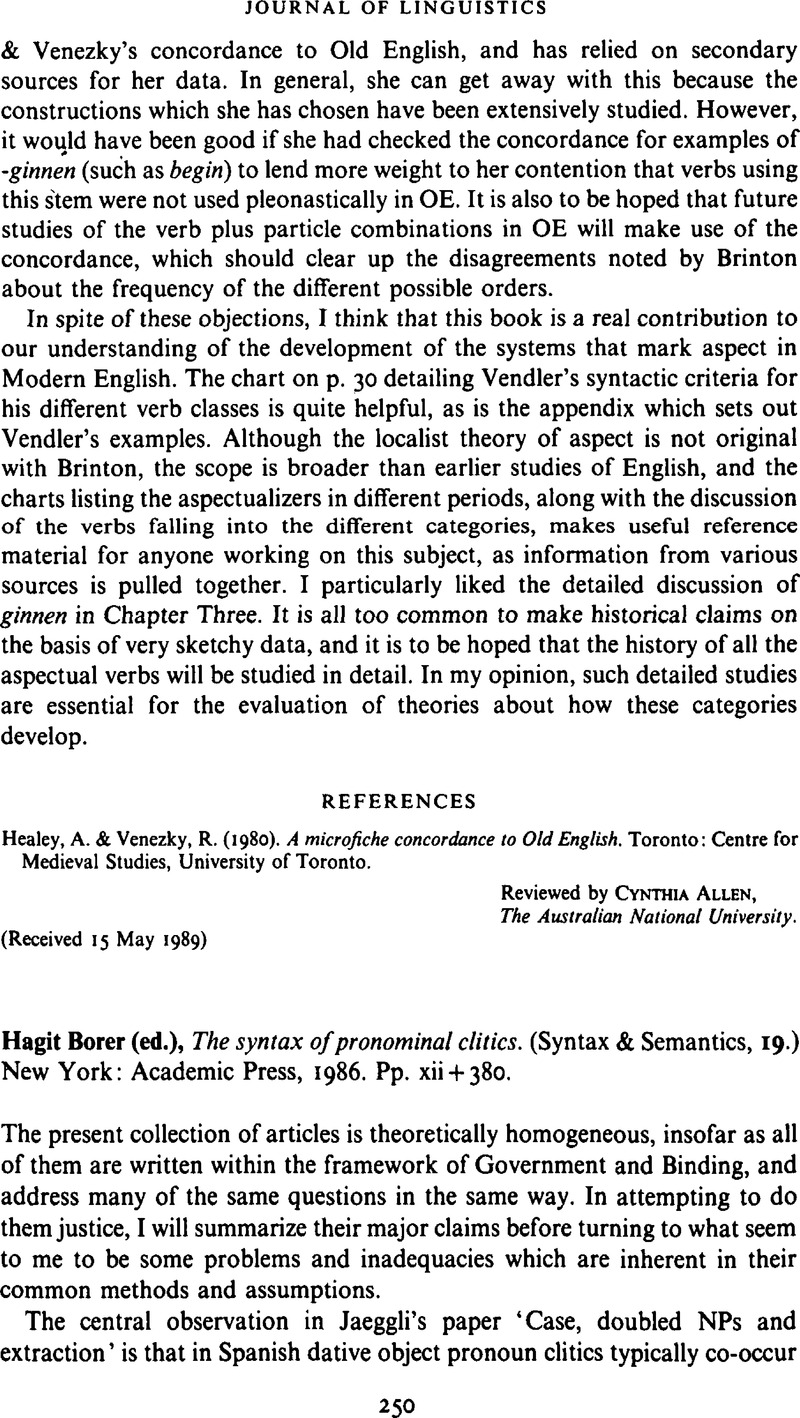No CrossRef data available.
Article contents
Hagit Borer (ed.), The syntax of pronominal clitics. (Syntax & Semantics, 19.) New York: Academic Press, 1986. Pp. xii + 380.
Review products
Hagit Borer (ed.), The syntax of pronominal clitics. (Syntax & Semantics, 19.) New York: Academic Press, 1986. Pp. xii + 380.
Published online by Cambridge University Press: 28 November 2008
Abstract
An abstract is not available for this content so a preview has been provided. Please use the Get access link above for information on how to access this content.

- Type
- Reviews
- Information
- Copyright
- Copyright © Cambridge University Press 1990
References
REFERENCES
Corbett, G. (1983). Hierarchies, targets, and controllers: agreement patterns in Slavic. London: Croom Helm.Google Scholar
Dryer, M. (1986). Primary objects, secondary objects, and anti-dative. Lg 62. 808–845.Google Scholar
Givón, T. (1985). Iconicity, isomorphism, and non-arbitrary coding in syntax. In Haiman, J. (ed.) Iconicity in syntax. Amsterdam: Benjamins. 187–220.Google Scholar
Jakobson, R. (1957). Shifters, verbal categories, and the Russian verb. Department of Slavic Languages, Harvard University.Google Scholar
Peirce, C. (1932). Icon, index, and symbol. In Hartshorne, C. & Weiss, P. (eds), Collected writings, Vol. 2, Harvard University Press.Google Scholar
Perlmutter, D. (1971). Deep and surface structure constraints in syntax. New York: Holt.Google Scholar
Spiess, F. (1956). Die Verwendung des Subjekt-personalpronomens in den lombardischen Mundarten. Bern: Francke.Google Scholar
Wackernagel, J. (1892). Über ein Gesetz der Indogermanischen Wortstellung. Indogermanische Forschungen 4. 336–433.Google Scholar


